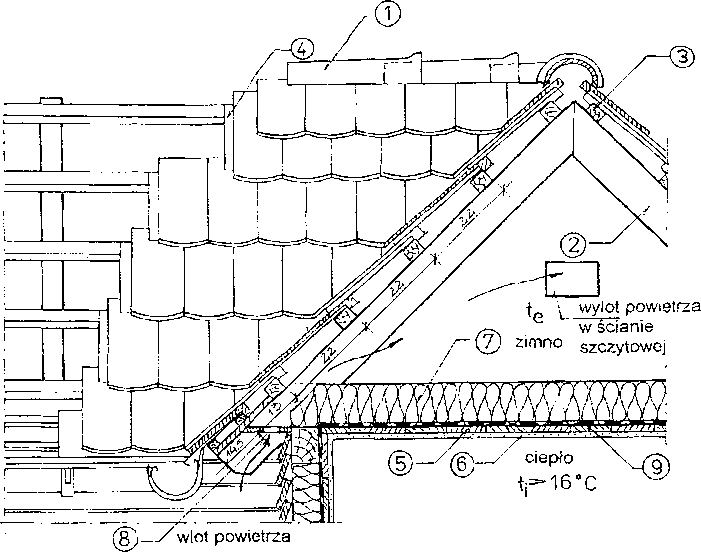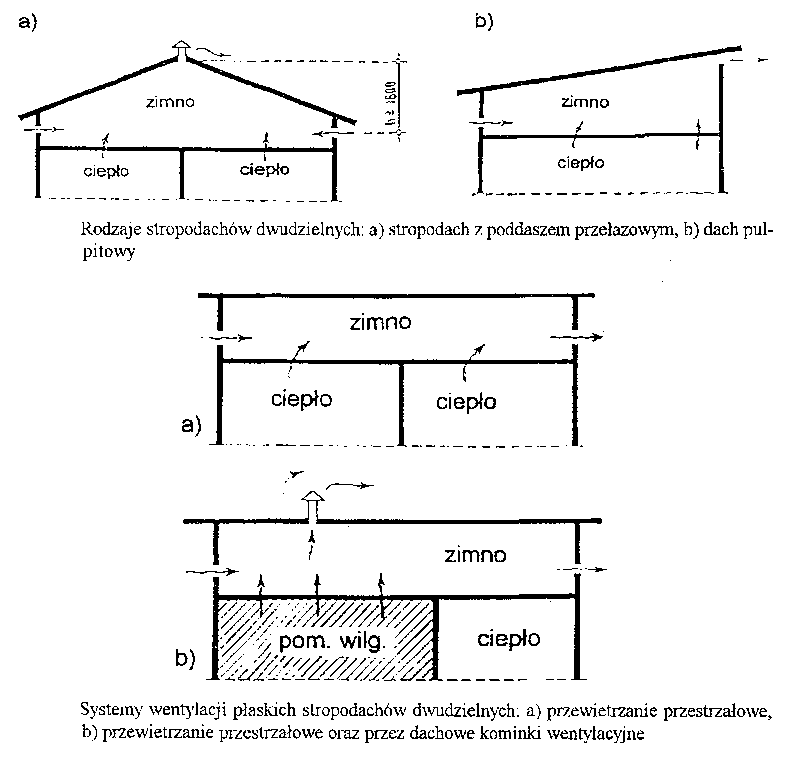Many new solutions for flat roofs use polymer-asphalt self-adhesive roofing felt, put on hard, non-absorbent thermal insulation boards. The main advantage of these roofing papers is the vapor permeability that diffuses from the inside of the flat roof to the outside. Another advantage is that they can be used …
Monthly Archives: January 2015
Split flat roofs
The drawings show examples of construction solutions for wooden double-sided flat roofs with economical wooden roof girders. With a small slope of the roof, gravel mix can be used on the roofing.
The gravel should be rinsed and have a diameter of from 16 do 32 mm. Minimum thickness …
Reasons for damp roofs
In order to protect the attic space against moisture, air intake openings at the eaves and exhaust openings in the gable walls or in the ridge should be made., e.g. raised ridge tiles for ventilation or ventilation ridge fireplaces.
 Proper insulation of the wooden ceiling and ventilation of the attic space of the building …
Proper insulation of the wooden ceiling and ventilation of the attic space of the building …
Bipartite roofs with a rafter structure
In flat roofs with a high attic, with a rafter roof airspace temperature (attic) should be almost equal to the outside temperature. To make it possible, the air space of the flat roof must be adequately ventilated (supply and exhaust openings). In addition, proper warming is necessary …
Principles of thermal insulation of double flat roofs
The table lists the minimum thickness of thermal insulation for a flat roof according to the current thermal protection requirements for buildings. A Ceram rib-and-slab ceiling was adopted for the structural layer of the double-section roof, reinforced concrete slab and a wooden beam ceiling with a soffit. The types of ceilings selected for the analysis are present in buildings …
Ventilation of two-section flat roofs
Ceilings
The flat roof protects the internal rooms of the building against rainfall and temperature changes, that is, the influence of the external climate. The flat roof consists of many layers with different functions. On the supporting structure (ceiling) there is often a vapor barrier (vapor barrier), then a thermal insulation layer (thermal insulation). Between …
Coating technology on plastic substrates
Why are plastics coated?? Coatings on plastics may be necessary for the following reasons:
1) this procedure is often cheaper than the necessary change of the color of the material;
2) manufacturing defects can be covered, like so far, streaks and stripes;
3) …
Elements of the hydraulic system of the boiler room
Because of destiny, devices placed in boiler rooms can be divided into four groups:
1) heat and energy transfer devices,
2) regulating devices,
3) control and measurement devices,
4) safety devices.
The most important hydraulic devices are listed in the table, which can be attributed to each of the …
POLLUTANTS EMITTED DURING THE COMBUSTION OF FOSSIL FUELS
To the primary pollutants emitted, when burning fossil fuels belong:
- carbon dioxide (C02),
- Sulphur dioxide (S02),
- nitrogen oxides (NOv), which they include: nitrogen dioxide (N02) and nitric oxide (NO),
- carbon monoxide - carbon monoxide (CO),
- dust …
